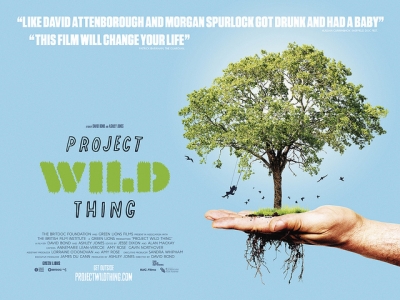 David Bond wants to sell you something. He’ll say anything, really. As long as it gets you and your kids outdoors.
David Bond wants to sell you something. He’ll say anything, really. As long as it gets you and your kids outdoors.
In his new documentary Project Wild Thing, the British filmmaker – alarmed that his young daughter was choosing to spend 97 percent of her waking time indoors – sets out to reverse shrinking demand for outdoor play by employing the same marketing tactics that sell Nintendos.
Now Bond is bringing his pitch to America, with a week-long set of Portland events that starts today.
We Skyped with Bond the day before his flight, in an interview that ranged from Norwegian villages to lightning rods and Hollywood blockbuster The Hunger Games.
***
So why does the United States need Project Wild Thing?
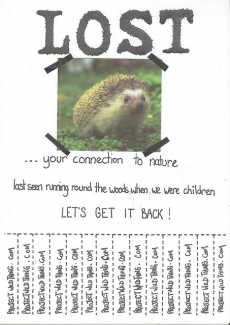 The United States fares quite badly in terms of reported childhood wellbeing on the Unicef survey.
The United States fares quite badly in terms of reported childhood wellbeing on the Unicef survey.
Nationwide, it's a big issue for you, as it is for us in Britain, that children are less and less connected to their natural environment.
An enormous amount of the thinking that led to Project Wild Thing – from the Nature Network to Richard Louv – has come out of the States. In some ways, you're ahead of us. In other ways, you're really a catastrophic representation of what can go wrong.
What’s gone wrong?
We've identified 11 major barriers between children and the outdoors, things that are high in the U.S. and U.K.. Things like traffic and road safety, perceptions toward stranger danger (fear of strangers in the media).
A risk averse, litigious culture makes it hard for organizations to let children roam freely without panicking about the risks.
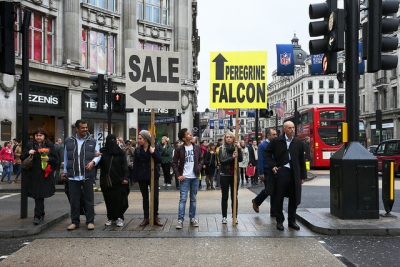 Project Wild Thing isn't just a film anymore. What's happened since your October 2013 release?
Project Wild Thing isn't just a film anymore. What's happened since your October 2013 release?
Well, in the film, as a kind of joke, I appoint myself the Marketing Director of Nature, and then we start this campaign to try to sell nature to children. In the process, we actually do a campaign – we get lots of free ad space and creatives helping us.
As a result of doing that, we got a lot of real people coming and saying “we want to join the movement.” We started signing people up, and the Wild Network was born. Now it has thousands of members, and quite a wide reach. It's been amazing to see, just in the last months since we launched.
What does the Wild Network do?
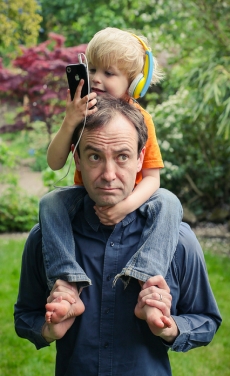 The insight from the film is that while there's a supply of green space out there, and organizations that offer natural experiences to children and parents, in economic terms, people aren't demanding it.
The insight from the film is that while there's a supply of green space out there, and organizations that offer natural experiences to children and parents, in economic terms, people aren't demanding it.
The reason for this shrinking demand is that the alternatives are demanded more voraciously: screen time, computer games, time indoors playing with toys. The Wild Network exists so that all of the organizations that want to sell outdoor play to children can use it to make a big noise about the benefits of their product.
When will you know that this big marketing noise is successful?
If you're marketing Nintendos, you know precisely how many you sold. But there's very little measurement of outdoor time for children. So it's a challenge to figure out if we're having an effect. At the moment, we're judging success by whether debate has been stimulated in the U.K.. We're looking at creating a measurement for time spent outdoors as well.
There's a gap there that we need to figure out. Do we use proxy sales, like rubber boots? Some power companies have suggested that we correlate power consumption with time spent outdoors. We also want to ask questions like what's the most outdoorsy city and the most outdoorsy day? We need answers like these to sell nature in an ongoing, cost-effective, celebratory way.
What nations, in your opinion, should we look to? Who already does what you call "Wild Time" well?
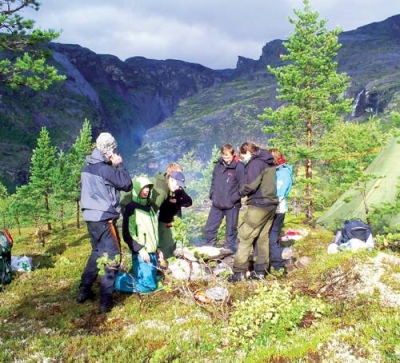 There's that great saying, if you design a town for a child and an eighty-year-old, then you end up with a really great town. Certainly in Northern Europe and Holland, they're much better at the supremacy of the child and the older person over the automobile.
There's that great saying, if you design a town for a child and an eighty-year-old, then you end up with a really great town. Certainly in Northern Europe and Holland, they're much better at the supremacy of the child and the older person over the automobile.
I've just written a blog about the Norwegian philosophy of love of the outdoors. Land is considered to be everyone's to roam on, to move freely through fields.
Scandinavians also have the belief that children need to be plugged into the natural world from a very young age. Newborns are often taken outdoors their first day. There's a different intention there. Formal education starts later, but they end up scoring well compared to nations like ours, which school our children much younger.
How do you counter the fears of risk-averse cultures like ours?
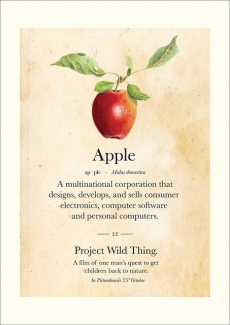 I have to be careful how I answer so as not to be rude, but it's nonsense. If you look logically at the risk of contracting these diseases, they're vanishingly small. It's equivalent to worrying about being struck by lightning. We don't attach lightning conductors to our children's heads when we take them outside. We don't act on the risk. But for some reason in the U.K., and the U.S. I think, we act on the fear of disease or stranger danger in very illogical ways.
I have to be careful how I answer so as not to be rude, but it's nonsense. If you look logically at the risk of contracting these diseases, they're vanishingly small. It's equivalent to worrying about being struck by lightning. We don't attach lightning conductors to our children's heads when we take them outside. We don't act on the risk. But for some reason in the U.K., and the U.S. I think, we act on the fear of disease or stranger danger in very illogical ways.
In the U.K., some are reacting quite strongly to the Wild Network, saying that our product is dangerous. But it's in fact really good for you, and the alternatives are dangerous. A life lived indoors, in front of the screen, is far more sinister in terms of the long-term risks of diabetes, heart disease, obesity.
But as Nature’s Marketing Director, that’s not the sales pitch you use in the film. What’s your angle?
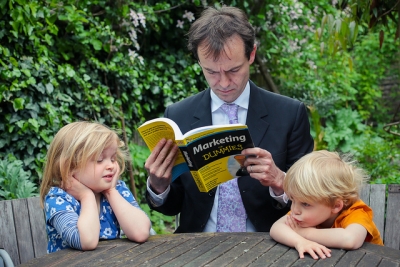 We try to be playful, to get people to see our product as fun and free.
We try to be playful, to get people to see our product as fun and free.
A lot of charities, NGOs, organizations who have traditionally been responsible for selling the joys of an outdoor life, have often done so through quite negative messaging: get your children outside or the climate will suffer, or they won't understand polar bears. In the Wild Network, we're trying really hard to have fun, not make people feel badly.
What demographic is proving the hardest sell so far? Parents?
Actually, it's teenagers. There's scientific evidence that says if you don't get children normalized to an outdoor life by the time they're seven or eight, then it just gets increasingly hard to persuade them to enjoy it. If you're a teenager in the depths of hormonal change, deep into social media and that's the way you're expressing yourself, having someone like me come along and say “Hey, let's put on some Wellington boots,” that's not even going to begin to break through. You'll see some of those kids in the film, who are almost unreachable.
Is there any way you've found to break into this particularly tricky market?
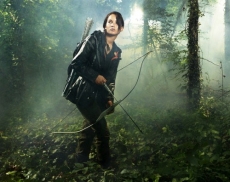 The Hunger Games is a really interesting representation of a wild life that teenagers really understand. The message is that there's something highly resilient about an outdoor person – that they're more determined, more likely to survive and be tough.
The Hunger Games is a really interesting representation of a wild life that teenagers really understand. The message is that there's something highly resilient about an outdoor person – that they're more determined, more likely to survive and be tough.
Teens in the U.K. respond well to a statistic that 80 percent of successful entrepreneurs were tree climbers when they were kids. So if you want to be a successful entrepreneur, a good place to hone the skills of a self-starter is in the outdoors.
So the sell there isn't climate change or understanding polar bears?
Appealing to a teenager's self-interest can be highly effective. That's been a big insight for us. You and I might respond well to an ethical consideration that we want our children to be nice to each other and know the names of plants and animals, but there are waves of people who are more motivated by financial gain or status. And these are people we have to communicate with as well. Finding those pathways has been really fun.
What's the plan for your week here in The Intertwine?
I'm really excited that a Wild Network might be launched in Portland. We're gathering nature's marketing department here for a big brainstorming. This would be the first Wild Network in the States, and we hope it might be the start of more marketing of nature by groups across the U.S..
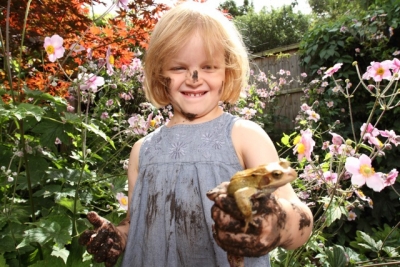 Your daughter plays a big role in the film. How have your efforts to up wild time for kids worked out at home?
Your daughter plays a big role in the film. How have your efforts to up wild time for kids worked out at home?
Well, they know they can make me really happy just by saying they want to go outdoors more. Whether they genuinely do or not, I really don't care. My daughter, who I measured at about three percent of her waking time outdoors, is now at about twelve percent. She's actively choosing to go outdoors far more than she ever did before. So that's amazing.
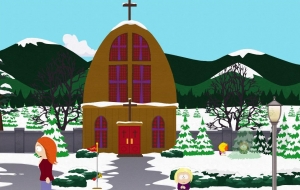 My name is Jerry Magee, and I’m the current President of the South Park Unitarian-Universalist Fellowship (I know, but our fellowship predates the popular, similarly-named cartoon by over 30 years). We're a church, and also a partner of The Intertwine Alliance.
My name is Jerry Magee, and I’m the current President of the South Park Unitarian-Universalist Fellowship (I know, but our fellowship predates the popular, similarly-named cartoon by over 30 years). We're a church, and also a partner of The Intertwine Alliance.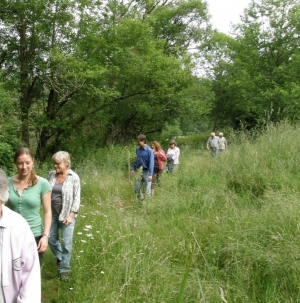
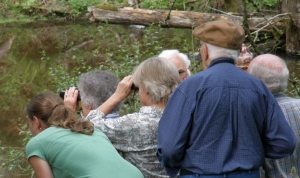 The Intertwine Alliance resonated with us because of its commitment to “ensure that the region’s trail network gets completed; that our natural areas get restored, and that people of all ages discover they can enjoy the outdoors near where they live.” Doing so equitably across the region will raise the quality of life for all of our Metro Area citizens.
The Intertwine Alliance resonated with us because of its commitment to “ensure that the region’s trail network gets completed; that our natural areas get restored, and that people of all ages discover they can enjoy the outdoors near where they live.” Doing so equitably across the region will raise the quality of life for all of our Metro Area citizens. 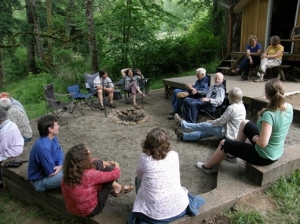 These outcomes serve four of the seven principles that Unitarian Universalist congregations together affirm and promote—the inherent worth and dignity of every person; justice, equity and compassion in human relations; the goal of world community, with peace, liberty and justice for all; and respect for the interdependent web of all existence, of which we are a part.
These outcomes serve four of the seven principles that Unitarian Universalist congregations together affirm and promote—the inherent worth and dignity of every person; justice, equity and compassion in human relations; the goal of world community, with peace, liberty and justice for all; and respect for the interdependent web of all existence, of which we are a part.
 Jerry Magee is the current President of the South Park Unitarian-Universalist Fellowship in West Linn, Oregon. He and his family have been members of this small congregation since 1988. For more information about the Fellowship, please visit their
Jerry Magee is the current President of the South Park Unitarian-Universalist Fellowship in West Linn, Oregon. He and his family have been members of this small congregation since 1988. For more information about the Fellowship, please visit their 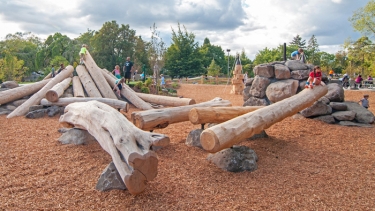
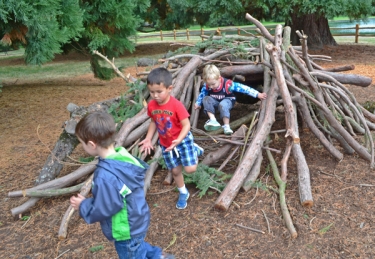 The nature-play area at Westmoreland Park officially opened on Oct. 25, 2014.
The nature-play area at Westmoreland Park officially opened on Oct. 25, 2014.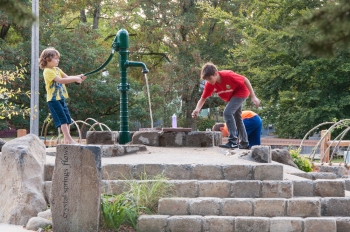 So, what is nature-based play? It's a current movement that responds to a basic human need in children – a connection to nature. Nature-based play areas provide environments where children can learn from natural elements and sow seeds of stewardship by fostering a deep connection to natural surroundings.
So, what is nature-based play? It's a current movement that responds to a basic human need in children – a connection to nature. Nature-based play areas provide environments where children can learn from natural elements and sow seeds of stewardship by fostering a deep connection to natural surroundings. 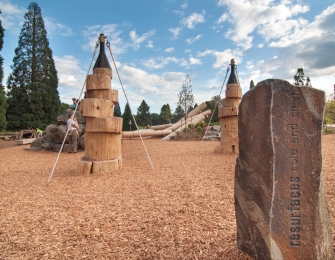 The theme behind the Westmoreland Park design is the restoration story of nearby Crystal Springs. We developed a sequence to the spaces that metaphorically follows the path of rainwater from the Cascades to Crystal Springs. This story is expressed through carved basalt columns accenting the pathway between the grove of sequoias and the bottom of the creek channel.
The theme behind the Westmoreland Park design is the restoration story of nearby Crystal Springs. We developed a sequence to the spaces that metaphorically follows the path of rainwater from the Cascades to Crystal Springs. This story is expressed through carved basalt columns accenting the pathway between the grove of sequoias and the bottom of the creek channel. 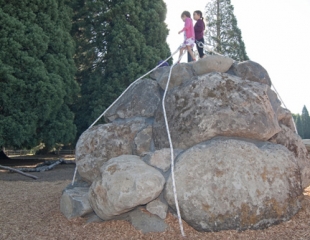 The Creek Channel, a concrete stream channel with willow tunnels, water pumps and sand, where children manipulate the water’s flow. Everyone has opportunity to participate in the fun; an elevated pooling area and at-grade water pump provide access to wheelchairs.
The Creek Channel, a concrete stream channel with willow tunnels, water pumps and sand, where children manipulate the water’s flow. Everyone has opportunity to participate in the fun; an elevated pooling area and at-grade water pump provide access to wheelchairs. 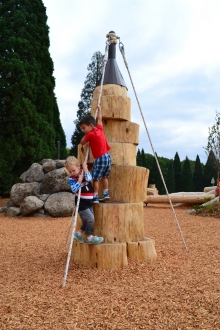 The eight-foot high Mountain Mound is comprised of mortared boulders of varying sizes, providing degrees of climbing challenge for all ages and abilities.
The eight-foot high Mountain Mound is comprised of mortared boulders of varying sizes, providing degrees of climbing challenge for all ages and abilities.  Mike Faha is a professional landscape architect and founding principal of GreenWorks, PC. He works to create livable, sustainable communities by integrating ecology, green infrastructure and urban design on a variety of project types. Mike received his Bachelor of Science from Oregon State University, and is a board member of Urban Greenspaces Institute and the Human Access Project.
Mike Faha is a professional landscape architect and founding principal of GreenWorks, PC. He works to create livable, sustainable communities by integrating ecology, green infrastructure and urban design on a variety of project types. Mike received his Bachelor of Science from Oregon State University, and is a board member of Urban Greenspaces Institute and the Human Access Project. 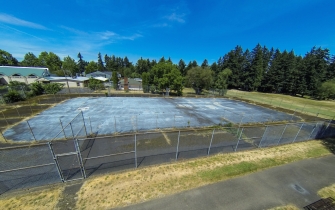 Starting in my early middle school years, from about 2005 on, my friends and I often walked a couple of blocks to a park we called Snake Park in the Rockwood neighborhood of Gresham. It’s official name is
Starting in my early middle school years, from about 2005 on, my friends and I often walked a couple of blocks to a park we called Snake Park in the Rockwood neighborhood of Gresham. It’s official name is 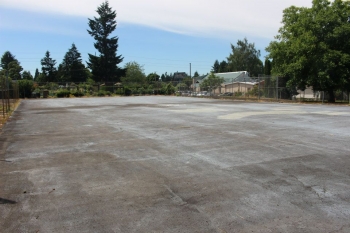 Fast forward almost 10 years, and the rink is still home to street soccer — only now in a more official capacity. In May 2014 I made a quick visit to the park and couldn’t help notice that people were still jumping the fence to play. That got me thinking. I reached out to my good friend Yesenia Delgado, and together we created a
Fast forward almost 10 years, and the rink is still home to street soccer — only now in a more official capacity. In May 2014 I made a quick visit to the park and couldn’t help notice that people were still jumping the fence to play. That got me thinking. I reached out to my good friend Yesenia Delgado, and together we created a 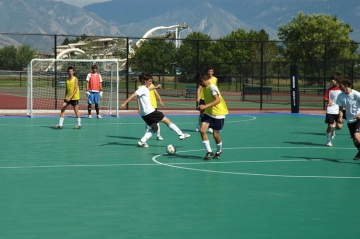 By the fall of 2014, we found ourselves in big community meetings, sharing the importance of this project. We believe that sports, in particular soccer, can bring togetherness to a community with a lot of diversity. The vision is to unite residents and help decrease gang activity, violence, drug use and high school/middle school dropout rates. Rockwood is pretty commonly known as the “ghetto." From personal experience, living there means regularly hearing about nearby fights and drug deals, the lack of security in the streets, and the process in which young kids drop out of school in order to join gangs. Not all kids who drop out follow the same path, of course; some need to leave school to provide for their families.
By the fall of 2014, we found ourselves in big community meetings, sharing the importance of this project. We believe that sports, in particular soccer, can bring togetherness to a community with a lot of diversity. The vision is to unite residents and help decrease gang activity, violence, drug use and high school/middle school dropout rates. Rockwood is pretty commonly known as the “ghetto." From personal experience, living there means regularly hearing about nearby fights and drug deals, the lack of security in the streets, and the process in which young kids drop out of school in order to join gangs. Not all kids who drop out follow the same path, of course; some need to leave school to provide for their families.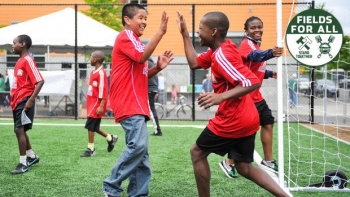 With momentum building, we decided to pitch our idea to the Portland Timbers soccer team and the organizations
With momentum building, we decided to pitch our idea to the Portland Timbers soccer team and the organizations 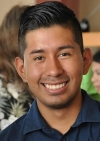 Ricki Ruiz is a resident of the Rockwood neighborhood in Gresham, Oregon. A senior at Warner Pacific College, he’s working toward a B.A in social entrepreneurship.
Ricki Ruiz is a resident of the Rockwood neighborhood in Gresham, Oregon. A senior at Warner Pacific College, he’s working toward a B.A in social entrepreneurship. Outdoor school has provided high-quality, place-based science education to Oregon youth for nearly 60 years. Launched in southern Oregon’s Curry County in 1957 as a way to reengage young people with nature and the natural resource economy, by 1970 more than 80 percent of Oregon middle school students attended outdoor school.
Outdoor school has provided high-quality, place-based science education to Oregon youth for nearly 60 years. Launched in southern Oregon’s Curry County in 1957 as a way to reengage young people with nature and the natural resource economy, by 1970 more than 80 percent of Oregon middle school students attended outdoor school. Many educators across the state know how valuable outdoor education is. In addition to sending their sixth graders to outdoor school, Tillamook School District integrates outdoor education into every grade level. Why? In the words of Superintendent Randy Schild, “Doing is the best way to learn.”
Many educators across the state know how valuable outdoor education is. In addition to sending their sixth graders to outdoor school, Tillamook School District integrates outdoor education into every grade level. Why? In the words of Superintendent Randy Schild, “Doing is the best way to learn.”  In the Portland metro region, thanks to funding from Metro, outdoor school is hanging on … but just barely. Depending on the school district, students may have to pay (Portland Public Schools asks families to pay $120 for a three-day program) or raise funds to go. Some years ago, Metro enacted a $1-per-ton tipping fee on solid waste that pays for one day of outdoor school for all participating students. This has kept a three-day version of the program going in all but two metro-area school districts.
In the Portland metro region, thanks to funding from Metro, outdoor school is hanging on … but just barely. Depending on the school district, students may have to pay (Portland Public Schools asks families to pay $120 for a three-day program) or raise funds to go. Some years ago, Metro enacted a $1-per-ton tipping fee on solid waste that pays for one day of outdoor school for all participating students. This has kept a three-day version of the program going in all but two metro-area school districts. Trained as a biologist, Rex Burkholder has worked as a science teacher and in the Northwest forests. He helped start the bicycling revolution in Portland as a founder and policy director of the
Trained as a biologist, Rex Burkholder has worked as a science teacher and in the Northwest forests. He helped start the bicycling revolution in Portland as a founder and policy director of the 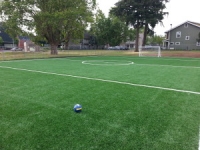
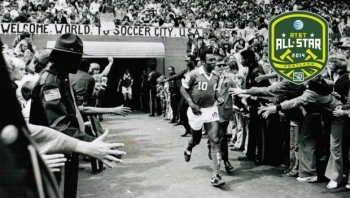
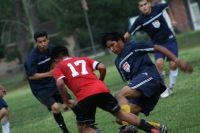
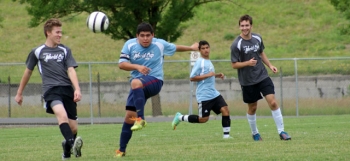
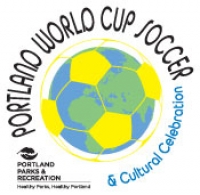
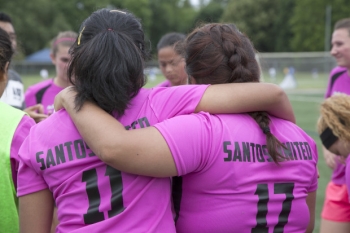
 Juan Carlos Ocaña-Chíu is the Equity Program Analyst at Metro, where he works closely with community-based organizations to find creative ways to measure equity throughout the region. He lives in Portland's Lents neighborhood.
Juan Carlos Ocaña-Chíu is the Equity Program Analyst at Metro, where he works closely with community-based organizations to find creative ways to measure equity throughout the region. He lives in Portland's Lents neighborhood.
 The United States fares quite badly in terms of reported childhood wellbeing on the
The United States fares quite badly in terms of reported childhood wellbeing on the  Project Wild Thing isn't just a film anymore. What's happened since your October 2013 release?
Project Wild Thing isn't just a film anymore. What's happened since your October 2013 release? The insight from the film is that while there's a supply of green space out there, and organizations that offer natural experiences to children and parents, in economic terms, people aren't demanding it.
The insight from the film is that while there's a supply of green space out there, and organizations that offer natural experiences to children and parents, in economic terms, people aren't demanding it.
 I have to be careful how I answer so as not to be rude, but it's nonsense. If you look logically at the risk of contracting these diseases, they're vanishingly small. It's equivalent to worrying about being struck by lightning. We don't attach lightning conductors to our children's heads when we take them outside. We don't act on the risk. But for some reason in the U.K., and the U.S. I think, we act on the fear of disease or stranger danger in very illogical ways.
I have to be careful how I answer so as not to be rude, but it's nonsense. If you look logically at the risk of contracting these diseases, they're vanishingly small. It's equivalent to worrying about being struck by lightning. We don't attach lightning conductors to our children's heads when we take them outside. We don't act on the risk. But for some reason in the U.K., and the U.S. I think, we act on the fear of disease or stranger danger in very illogical ways. We try to be playful, to get people to see our product as fun and free.
We try to be playful, to get people to see our product as fun and free. The Hunger Games is a really interesting representation of a wild life that teenagers really understand. The message is that there's something highly resilient about an outdoor person – that they're more determined, more likely to survive and be tough.
The Hunger Games is a really interesting representation of a wild life that teenagers really understand. The message is that there's something highly resilient about an outdoor person – that they're more determined, more likely to survive and be tough. Your daughter plays a big role in the film. How have your efforts to up wild time for kids worked out at home?
Your daughter plays a big role in the film. How have your efforts to up wild time for kids worked out at home? Through storytelling outlets like
Through storytelling outlets like 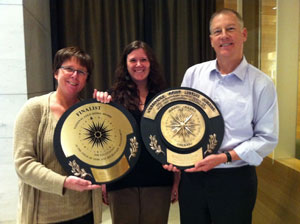
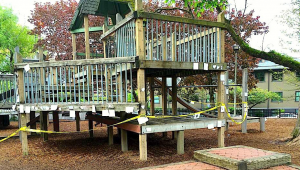 Now, with our last parks bond measure (passed 20 years ago) about to be paid off, voters can make sure that Portland parks don’t lose ground -- or playgrounds. The City’s 2014 Parks Replacement Bond, slated for the November ballot, will raise about $68 million for major maintenance projects without increasing the current tax rate.
Now, with our last parks bond measure (passed 20 years ago) about to be paid off, voters can make sure that Portland parks don’t lose ground -- or playgrounds. The City’s 2014 Parks Replacement Bond, slated for the November ballot, will raise about $68 million for major maintenance projects without increasing the current tax rate.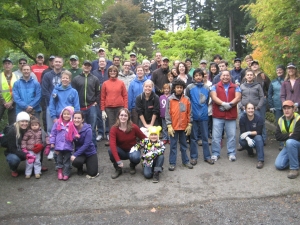 Category: “Precious Parks”
Category: “Precious Parks” How can the Parks Replacement Bond help?
How can the Parks Replacement Bond help? Nick Hardigg's 15 years of experience promoting parks and natural lands includes work for
Nick Hardigg's 15 years of experience promoting parks and natural lands includes work for 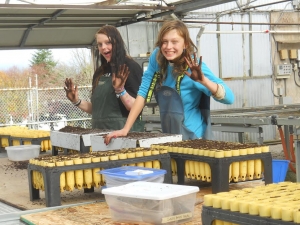 For more than 15 years,
For more than 15 years, 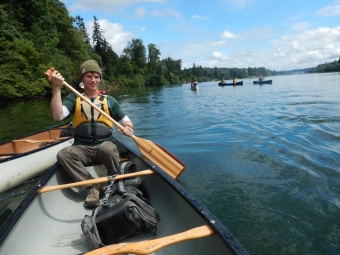 We also think of PYYCC as a way to bring nature to young people who may not have the means or motivation to seek it on their own, thus fostering a lifelong connection and developing our next generation of conservationists.
We also think of PYYCC as a way to bring nature to young people who may not have the means or motivation to seek it on their own, thus fostering a lifelong connection and developing our next generation of conservationists.
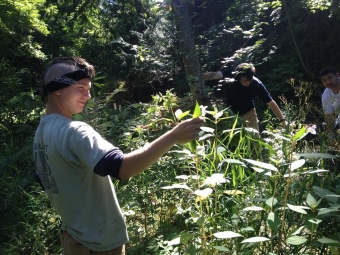

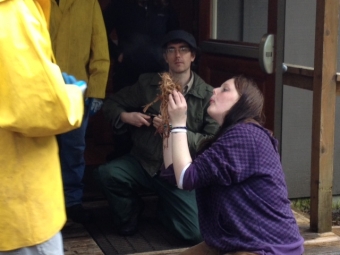
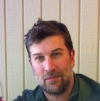 Michael Oliver is the program coordinator for Mount Hood Community College's
Michael Oliver is the program coordinator for Mount Hood Community College's 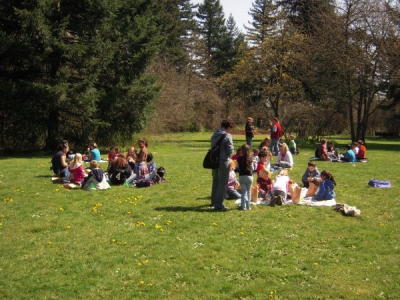
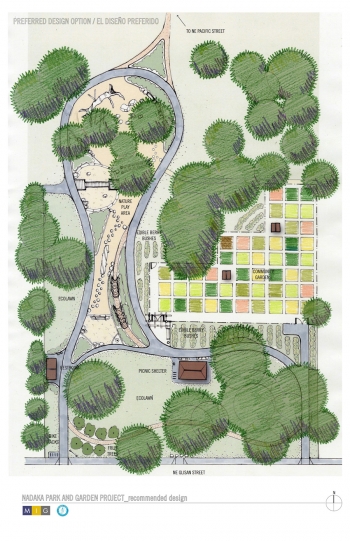
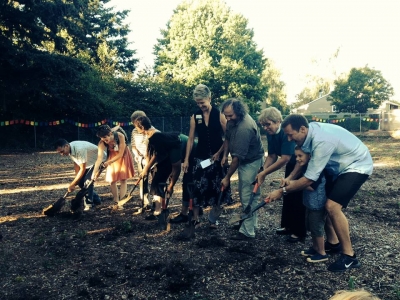 At the groundbreaking celebration, spray paint marked Nadaka’s future community garden and nature play area. They are so close to being here, on the ground – a day that felt far off when I first heard about this vision five years ago, as a Gresham city councilor.
At the groundbreaking celebration, spray paint marked Nadaka’s future community garden and nature play area. They are so close to being here, on the ground – a day that felt far off when I first heard about this vision five years ago, as a Gresham city councilor.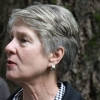
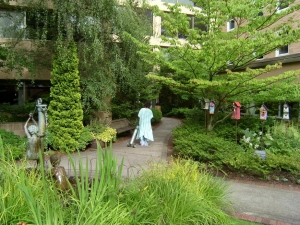 In 1984, Roger Ulrich’s “surgery recovery and view out the hospital window study” set a worldwide standard for research on the
In 1984, Roger Ulrich’s “surgery recovery and view out the hospital window study” set a worldwide standard for research on the 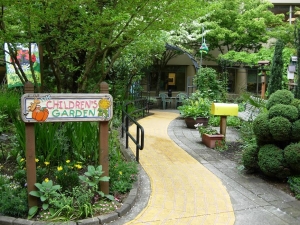 Families and stress study (scheduled to begin shortly)
Families and stress study (scheduled to begin shortly)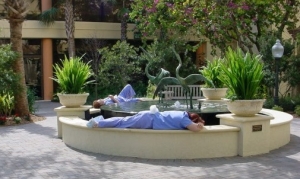 Evidence suggests that access to gardens can reduce stress in health care workers, increase job satisfaction, and may help foster personnel recruitment and retention.
Evidence suggests that access to gardens can reduce stress in health care workers, increase job satisfaction, and may help foster personnel recruitment and retention.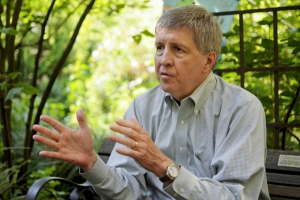
 Teresia Hazen, MEd, HTR, QMHP, a registered horticultural therapist, is Legacy Health's coordinator of
Teresia Hazen, MEd, HTR, QMHP, a registered horticultural therapist, is Legacy Health's coordinator of